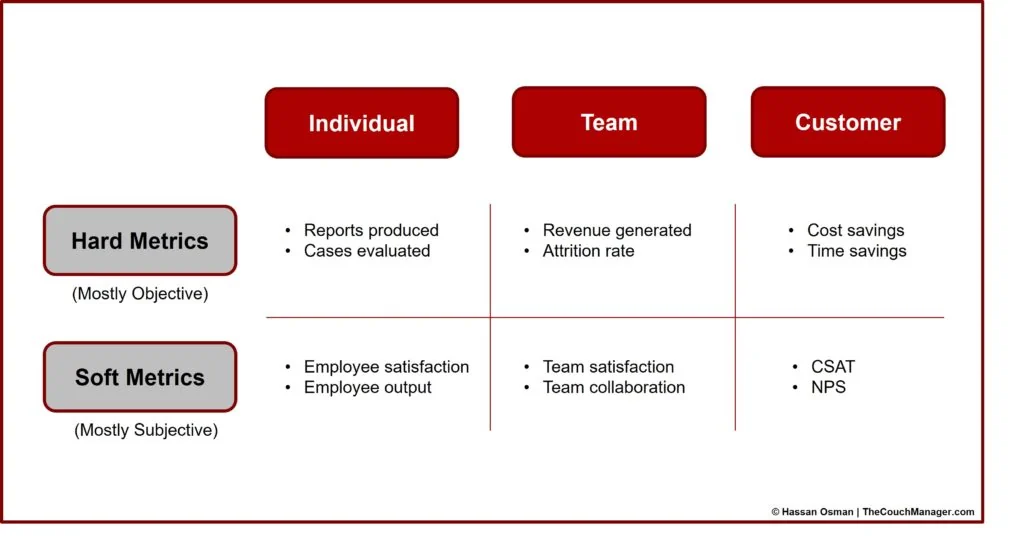
After you implement and manage your hybrid work model, your next step is to determine what’s working and what’s not by running a hybrid team evaluation.
Before you start, here are a few things you should know about implementing a hybrid team evaluation strategy.
First, measuring and evaluating the performance of a hybrid team is complex. In fact, measuring regular performance in any organization is not a straightforward exercise, and hybrid team evaluations make it a bit more challenging.
Second, most performance measurement systems and tools can stay the same. Technically, there’s nothing special about hybrid teams. The difference between hybrid and traditional teams is where and when employees get their work done. So although there might be some metrics that you have to reassess or add, the systems to measure productivity and satisfaction can stay the same for the most part.
Third, there are many ways to evaluate and measure your team’s success. You can evaluate across industries, teams, and levels, and there are hundreds of resources that delve deep into this topic. However, keep in mind that there is no absolute right or wrong method for evaluations, and don’t get stuck with overthinking.
Here are three tips that will help you out.
Tip #1: Define Success Factors and KPIs for Hybrid Team Evaluation
A couple of things you should consider for your evaluations are your team’s success factors and KPIs, or Key Performance Indicators.
Here’s a model that can help.
Consider three dimensions to assess overall performance and productivity: individual, team, and customer.
The individual dimension includes your individual contributor metrics.
The team dimension includes your overall team metrics, which can be considered at different functional or business unit levels, including the entire organization.
The customer dimension includes all your customer-related metrics. The customer can be internal or external, or the customer might not exist in some cases.
Then for each dimension, evaluate along two different types of metrics: hard and soft.
Hard metrics are those that are mostly objective and usually include data that can be verified.
Soft metrics are mostly subjective and are usually related to feelings and perceptions.
Here’s a matrix that gives you examples of each type of metric under each dimension.

Tip #2: Assess for a Hybrid Environment
Look at your existing hard and soft metrics and assess them to make sure they make sense for a hybrid environment.
Some can be either replicated online or changed to results-based measures.
For example, suppose one of your current individual contributor hard metrics focuses on physical timestamps (i.e., employees clock in and out of your business). In that case, you can either replicate your time-tracking system to a digital one or consider eliminating it and move toward output-based measures.
Other metrics might be skewed toward in-person activities and need to be reassessed. For example, on-site sales visits could be reassessed to consider whether it makes sense to change them to virtual visits or a different metric altogether.
After reassessing and modifying your current metrics, consider adding net-new ones that cover your hybrid work model. Then roll out your hybrid evaluation metrics as you normally would through your organization’s process.
Tip #3: Capture and Analyze Data
Next, start capturing the results of your hard and soft metrics and analyze them across multiple areas to evaluate your hybrid model. Here are a few ideas:
- Time: How are you doing today compared to last month, quarter, or year (across your individual, team, and customer dimensions)?
- Individual Arrangements: How are “more remote” team members doing compared to “more on-site” employees?
- Team/Function Arrangements: How is Team A doing compared to Team B?
- Managers vs. Individual Contributors: Are there any differences in perception by managers compared to the perception of individual contributors about the hybrid work model?
None of these evaluations are perfect in isolation, but they give you some trends or stories when you look at them from a big picture perspective.
This is an excerpt from my latest book: Hybrid Work Management: How to Manage a Hybrid Team in the New Workplace
